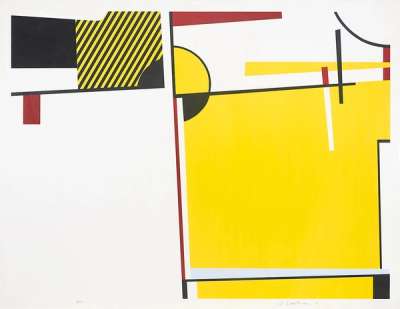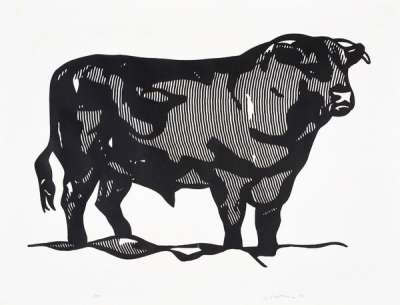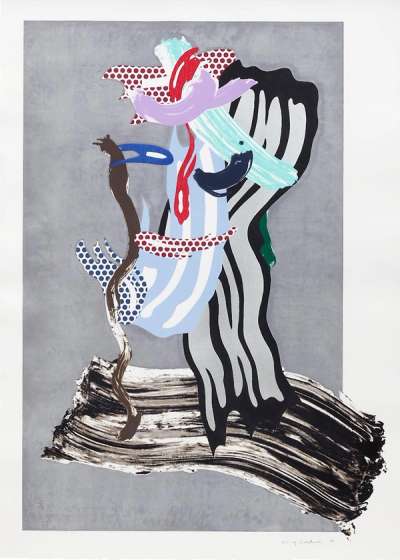
Bull Head II

Bull Head II
Signed Mixed Media
Roy Lichtenstein
Price data unavailable
AAGR (5 years) This estimate blends recent public auction records with our own private sale data and network demand.
There aren't enough data points on this work for a comprehensive result. Please speak to a specialist by making an enquiry.
Medium: Mixed Media
Edition size: 100
Year: 1973
Size: H 54cm x W 71cm
Signed: Yes
Format: Signed Mixed Media
TradingFloor
Track this artwork in realtime
Watch artwork, manage valuations, track your portfolio and return against your collection
Track auction value trend
Auction Results
| Auction Date | Auction House | Location | Hammer Price | Return to Seller | Buyer Paid |
|---|---|---|---|---|---|
| September 2021 | Wright | United States | |||
| February 2019 | Christie's New York | United States | |||
| January 2019 | Phillips London | United Kingdom | |||
| October 2016 | Doyle Auctioneers & Appraisers | United States | |||
| October 2013 | Bonhams San Francisco | United States | |||
| April 2011 | Christie's New York | United States |
Meaning & Analysis
Roy Lichtenstein’s prominent status as a Pop Art icon was cemented in the 1960s. Returning to the compositional devices he first applied in a six part sequence titled Bull Profile series, the artist presents three compositions in his Bull Head series of 1973.
Lichtenstein creates a work that is slick, mass-produced in feel, and disruptive of the line that divides high art from low brow.
Bull Head II, constituting phase two of the simplification process explored by the artist, notably abstracts the image of the bull. The animal’s horns and muzzle are encoded with the help of geometrical forms and colours, mirroring the layout of Bull IIIfrom the Bulls series. The work presents the essential, rather than particular qualities of the animal. Elements alluding to grass and the sky above the pasture have been added to the background, using dark green and light blue block colouring.
In Bull Head series, Lichtenstein illustrates a shift from representational to abstract, interrogating the artistic claim of the modernist era, which asserts that universal truth is revealed through the distillation of forms. The artist in this series parodies this belief by calling into question the presumed distinction between realistic and abstract depictions.
Roy Lichtenstein, born in New York, 1923, is a seminal figure in the Pop Art movement, renowned for his comic book and advertisement-inspired artworks. His transformative journey from classical painter to Pop Art pioneer began with his iconic piece, Look Mickey, marking the fusion of painting with pop culture. Lichtenstein’s works, including Whaam!, Drowning Girl, and Crying Girl, blend parody and satire, challenging the boundaries between popular culture and ‘high art’. With over 5,000 pieces to his name, Lichtenstein’s enduring influence resonates in contemporary art, his works celebrated in prestigious institutions worldwide.
















